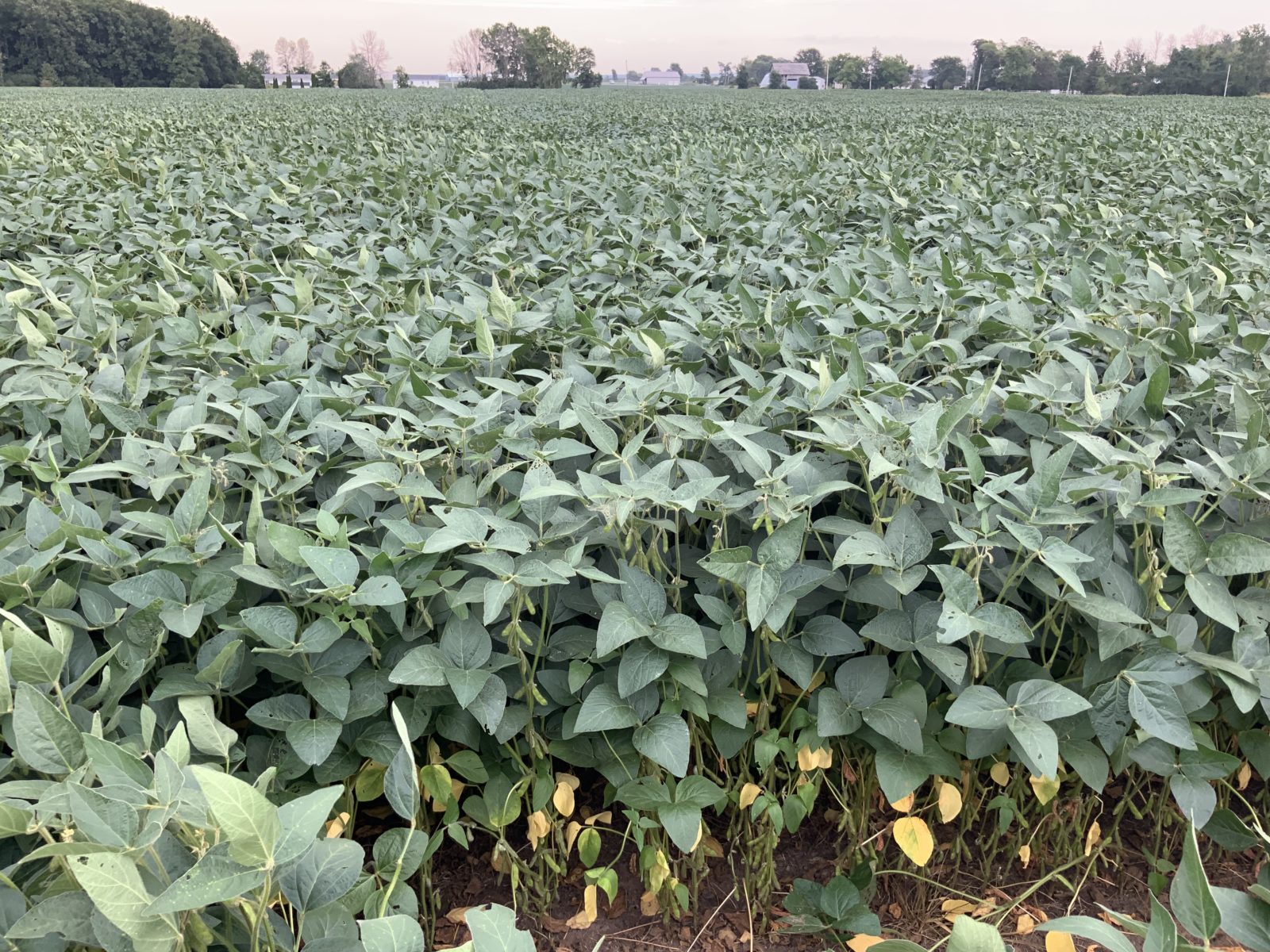 Our crops continue to look good. The weather in our area of the U.S. Northeast has been dry, but our soybeans and corn haven’t been affected much yet. We are still on track to have the potential for one of our best crops.
Our crops continue to look good. The weather in our area of the U.S. Northeast has been dry, but our soybeans and corn haven’t been affected much yet. We are still on track to have the potential for one of our best crops.
All our soybeans are waist-high and covered with pods. Whatever moisture we get this month will help those pods to fill. We ended up treating all our soybean fields with insecticide to control soybean aphids during the second herbicide application last month.
Ears on our corn are filling out, and it appears to have strong yield potential, as well.
We recently finished wheat harvest. Our yields were excellent, about 5.5 metric tons (MT)/ha, or 82 bushels/acre. But although the weather has been dry, we got some rain just before wheat harvest. That caused high moisture levels in the wheat kernels, so that they sprouted. That’s a quality problem that affected most farmers in our region this year, so the wheat all will have to be used as animal feed. Following wheat harvest, a neighbor baled the leftover straw to use as bedding for cows, providing even more value from the crop.
 We will now be preparing the wheat fields for next season. This is the first year we farmed one of the fields, so we are putting some extra time and effort into it that will benefit future crops. We are leveling this field, which will eliminate low spots where water could collect and high spots that have more risk for erosion. This is a multi-step process. First, we deep-rip the field, or do deep vertical tillage that goes into the soil to break up compaction. Then we disk the surface to allow the topsoil to move a bit. The next step is leveling it with an implement that we built. Our leveler is about 6.1 m, or 20 feet, long, and 12.2 m, or 40 feet, wide. Long blades plane the top of the soil, allowing soil from high spots to fill in low spots.
We will now be preparing the wheat fields for next season. This is the first year we farmed one of the fields, so we are putting some extra time and effort into it that will benefit future crops. We are leveling this field, which will eliminate low spots where water could collect and high spots that have more risk for erosion. This is a multi-step process. First, we deep-rip the field, or do deep vertical tillage that goes into the soil to break up compaction. Then we disk the surface to allow the topsoil to move a bit. The next step is leveling it with an implement that we built. Our leveler is about 6.1 m, or 20 feet, long, and 12.2 m, or 40 feet, wide. Long blades plane the top of the soil, allowing soil from high spots to fill in low spots.
Once that process is done, we will plant cover crops in this new field and all the rest of our winter wheat fields. We will plant a mix of crimson clover, buckwheat, tillage radish and a sorghum-sudan grass hybrid. This cover crop will keep the soil in place, add organic matter and improve soil structure. We will plant a different cover crop mix following our soybean and corn crops.
 While the crops are growing, we have been continuing to grow our soybean markets. For example, I participated in an event in New York City promoting bio-based products made from soybeans like SYNLawn, an artificial turf with bio-based backing that includes soybean oil. At the science-focused educational event, I shared how soybeans are grown and their many uses. Growing markets like this for soybean oil can impact the affordability of soybean meal for livestock feed.
While the crops are growing, we have been continuing to grow our soybean markets. For example, I participated in an event in New York City promoting bio-based products made from soybeans like SYNLawn, an artificial turf with bio-based backing that includes soybean oil. At the science-focused educational event, I shared how soybeans are grown and their many uses. Growing markets like this for soybean oil can impact the affordability of soybean meal for livestock feed.
We also enjoy sharing our farm with others. On August 12, we hosted a watch party of a Major League Baseball game between the New York Yankees and the Chicago White Sox played at the Field of Dreams. The Field of Dreams is a baseball field built in an Iowa field for the classic movie of the same name, and a great opportunity to share a bit more about farming. We invited area farmers, government officials and a group of New York City firefighters to our farm to watch the game, check out our equipment and learn a bit more about the fields surrounding that iconic ballfield. This was the first event we hosted on our farm since the global pandemic started.
 While growing our crops, we also focus on the many different customers that will buy our crops and their byproducts. We have found creative ways to do that this year.
While growing our crops, we also focus on the many different customers that will buy our crops and their byproducts. We have found creative ways to do that this year.
This field update is funded by the soybean checkoff. To share or republish part or all of this Ground Work 2021 article, please link to the original article and credit www.USSOY.org.

